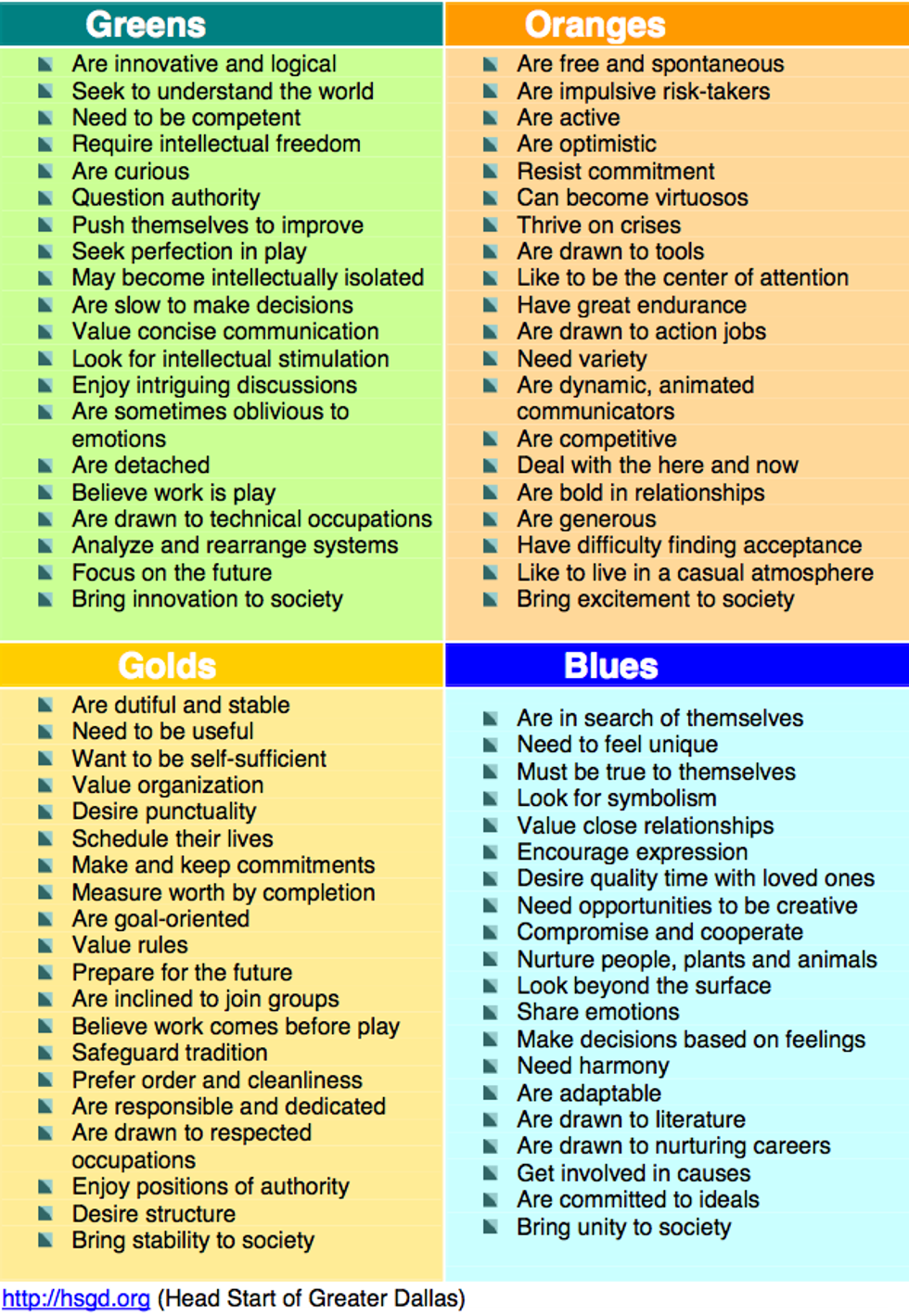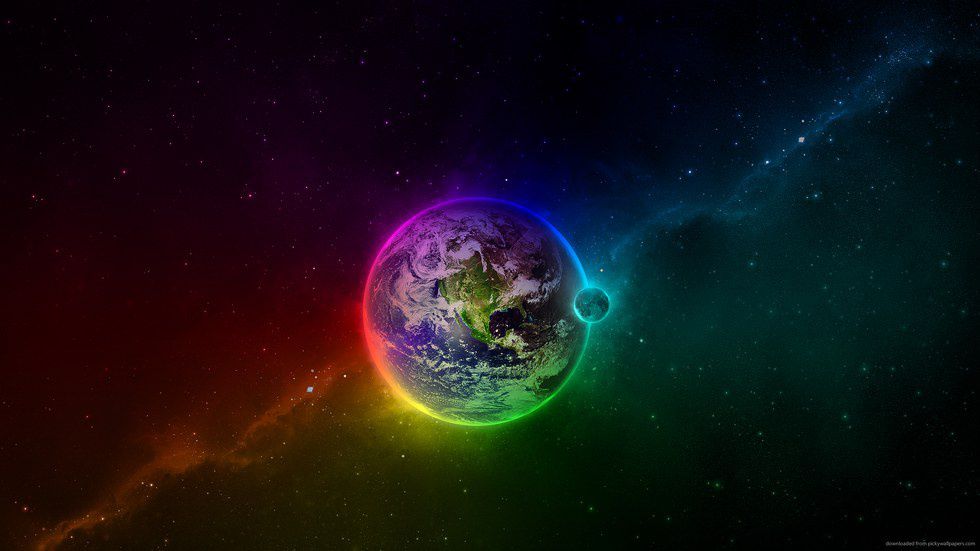Do you think you have a grasp on who you are and what you need from others for positive interactions?
In many of the leadership programs I’ve completed, I’ve been asked to take a look at myself before we turn to my interactions with others. The idea is that if you understand yourself and how you operate, you can better understand how to be empathetic of others.
For example, there is a popular personality quiz called “True Colors” that has you choose which group of traits best fits your personality and at the end you receive your color ranking (between orange, gold, green and blue).
Here is a similar test if you’re interested in taking it.
What this tells me about myself is that my first — and extremely strong — color is blue. Those who are blue are often empathetic caretakers that want to make others happy but need encouragement and validated themselves. They see themselves as warm, affirming, caring and social experts; but others often see them as over-emotional people who talk too much and have a tendency toward manipulation or being aloof when things don’t go their way.
I will candidly say that I can see those own attributes in myself. Others have called me nonchalant or manipulative and while I don’t always (and in all likelihood rarely ever) aim to act this way, I could see how others with different colors would see these negative qualities in me. For example, for an individual who finds themselves to be a stable, efficient, neat, organized and task-oriented gold would probably find great frustration teaming up with me on projects because while they may be considering the practicalities of our task, I might be thinking about how others will feel about it, even if that feels less efficient.
So sure, someone who is gold could write me off of the project when I come in and want to make sure they’re in good spirits before starting, or they can take the time to understand where I’m coming from and why I value what I do.
Similarly, we can highlight the bad in one another, or we can consider our positivities instead and how they work together to bring the best out in us.
Of course, a “good leader” will idealistically learn to exhibit attributes of all colors and conflict/leadership styles. They will learn from themselves and others in order to best interact with others by being sensitive of what others need from them. This doesn’t mean that you change yourself for others, but rather that you allow yourself to grow as a person by being realistic about your interactions with others to realize that everyone has different ways of interacting.
Maybe if we all consider and embrace our differences rather than believing that no matter what we can’t get along, maybe if we attempt to understand one another and why we are so different, the world will be a little bit better.
And hey, if nothing else, it’s something to learn about yourself. Why not?
























